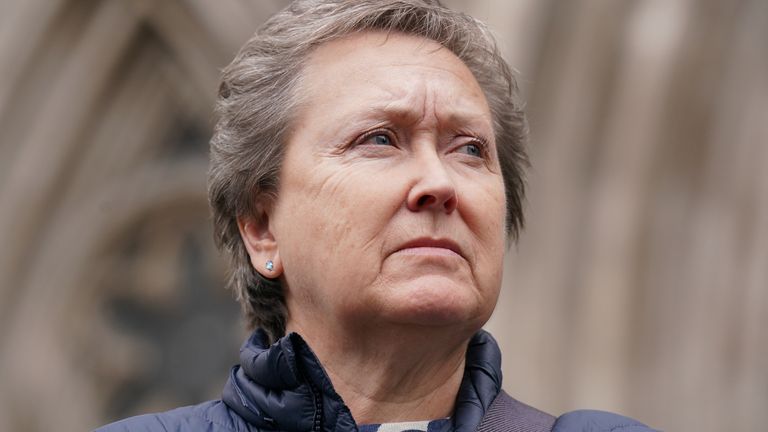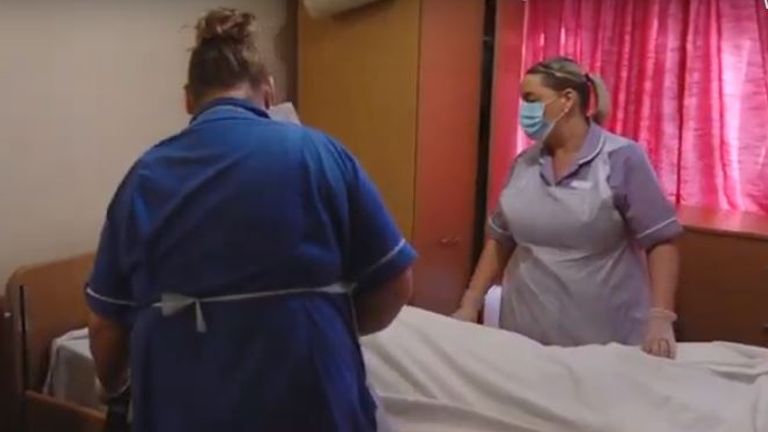[ad_1]
“All of the residents on the top floor are COVID-positive,” the nurse warned us as we put on protective overalls, masks and gloves and prepared to enter the care home.
It was the Easter weekend in April 2020 and a clear blue sky and a warm breeze disguised the fact that the nation was in lockdown. A new disease called COVID-19 was spreading fast.
Cameraman Andy and I were about to step into a residential nursing home that was in the grip of this virus.
I didn’t know it at the time but what I was about to witness what would set the tone for a year-long investigation into how COVID killed thousands of elderly care home residents.
That weekend, we witnessed staff struggling to find the right personal protective equipment (PPE) like masks, gloves and aprons.
This was partly because there was a global run on PPE and the government was frantically trying to source supplies from wherever it could. But there were other reasons too, that were not apparent at the time.
Nevertheless, it was clear to me that the carers and nursing staff didn’t have enough of this equipment.
I walked along the narrow corridor and could see elderly patients in their beds. One man was struggling to breathe and staff were trying to make him comfortable. Another man called John was pleading with staff to allow him to go home.
“I want out of here,” he said. The nurse tried her best to reassure him, saying once he had recovered from COVID he could go home.
Sadly, John died two days later.
Read more:
Government broke law when it sent patients into care homes without COVID testing
Matt Hancock says ‘we worked as hard as we could to protect care homes’
Resources were promised to care homes
In the months earlier, care homes had been issued with guidance on how to respond to COVID. This guidance was written by the now-disbanded Public Health England (PHE) and formed the basis of many of the early decisions made by politicians and civil servants.
In February, PHE said the risk to care homes was low and even suggested that masks weren’t necessary.
In March, the guidance told care homes to continue as normal.
But, as infection rates began to rise, new guidance in April put care homes at the centre of the fight against COVID.
They were being asked to take elderly patients from hospitals so that beds could be made available should the NHS start to get overwhelmed.
In return, they were assured that they would get all the resources they needed to fight the virus.
Sadly, this is where it starts to go wrong.
In fact, we know that doctors were being told not to test elderly patients before they were sent to care homes – the fear was that a positive test would delay the discharge, meaning hospitals couldn’t free up bed space.
So, elderly patients were sent to care homes without a test.
This meant that nobody had a clue who had COVID and who didn’t.
The care nurses, with their flimsy PPE, had no chance. The virus spread like wildfire. The staff too ill-equipped to stop it. The elderly too frail to fight back.
It was like the fox got into the hen house.
Unsurprising government found to have broken the law
Care home owners were desperate for tests so that they could figure out who had COVID. But that kind of testing would take months to be rolled out and even then not everyone was eligible.
All of this was played out in front of me that weekend. It was by no means an isolated event – it was repeated up and down the country.
We now know that the government broke the law by discharging untested hospital patients into care homes during the early stages of the pandemic.
It is a fact that is neither surprising nor consoling to all those families who live with the pain of not knowing if their loved ones might have survived if more had been done to protect them.
[ad_2]




